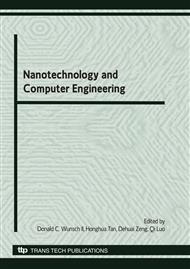p.512
p.519
p.523
p.528
p.534
p.540
p.546
p.550
p.558
Performance Assessment for Distributed Information Fusion System Based on Data Mining
Abstract:
This paper presents a series of methods based on data mining theory for information fusion system in order to avoid the ubiquitous problems of comprehensive evaluation in the process of information fusion. The methodology is developed by analyzing the significance factor that has impact on fusion performance based on gradual regression method and by analyzing the performance testing results of fusion by group using hierarchy clustering method. Through the analysis of performance testing results for distributed information fusion system, the factors that have effects on fusion performance and the correlation between various influencing factors have been discovered. Moreover, the performance of information fusion system is enhanced by adjusting the disadvantageous factors and improving the design methods.
Info:
Periodical:
Pages:
534-539
Citation:
Online since:
June 2010
Authors:
Price:
Сopyright:
© 2010 Trans Tech Publications Ltd. All Rights Reserved
Share:
Citation:


